
Healthy cucumbers after 6 weeks in SIP. Note the tepee (left) and another type of bamboo stick support with trellis (right).
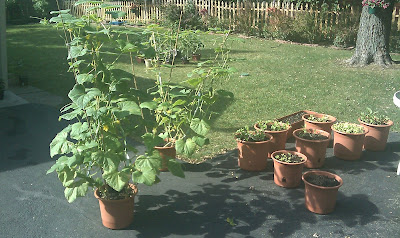
Healthy cucumbers, peppers, lettuce and Swiss chard in SIP.
Cucumber beetle is a common name given to members of two genera of beetles. The adult beetles are found on the leaves and flowers of cucurbits; which are plant species of the melon, cucumber and squash varieties.
Plants Attacked: Cucumber, cantaloupe, winter squash, pumpkin, gourd, summer squash, and watermelon, as well as many other species of cucurbits. Cucumber beetles may also feed on beans, corn, peanuts, potatoes, and other crops.
The two most common pests in this family are the striped cucumber beetle and spotted cucumber beetle, which looks very much like a green ladybug. However, unlike the ladybug, cucumber beetles are considered harmful insects. They are sucking invaders which harm crops and ornamental plants.

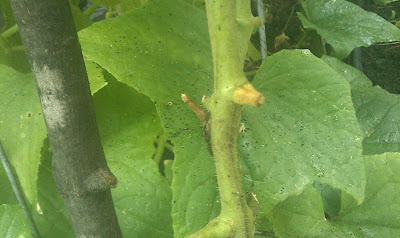
Adult beetles attack the tender young growth of stems and leaves, and the buds and petals on mature specimens. They also carry and spread the bacterial wilt organism, Erwinia tracheiphila and the cucumber mosaic virus.
Eggs are laid in clusters on the underside of leaves, and hatch into yellowish larvae 1⁄2 inches (13 mm) long. The larvae then commence to feed on plant roots by tunneling into the ground. In some areas, the larvae is called the "corn rootworm".
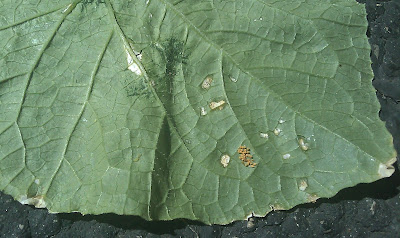
Eggs of cucumber beetle
Cucumber beetles can attack and overwinter in corn and bean fields; in some areas they may hide out in compost or trash piles.
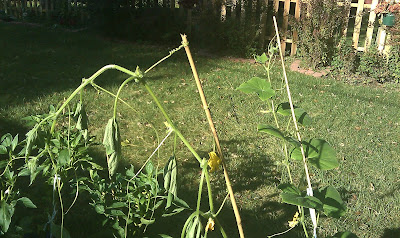
Bacterial wilt in a cucumber plant previously infested with cucumber beetle
Eradication consists of:
- manual removal - regularly inspect your plant leaves (especially underneath) for the cucumber beetle eggs. They are small, round, and orange to reddish. Removing the eggs will help control the beetle population.
- keeping cultivated areas free of litter and debris from infested plants
- application of pyrethrin-containing insecticides applied directly to host plants, such as Cyfluthrin or a non-systemic organphosphate insectside like malathion
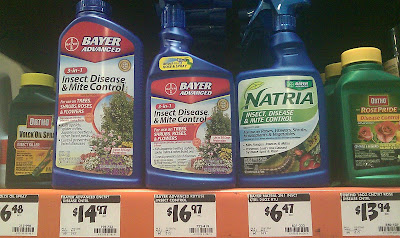
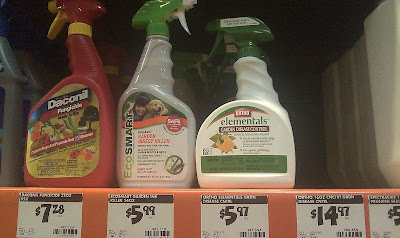
Garden Safe Fruit and Vegetable Insect Killer contains the same volume as Natria (24-ounces) but has double the concentration of pyrethrins (0.02%):
References:
Cucumber beetle - Wikipedia http://bit.ly/Pei2pG
Cucumber Beetle Control - YouTube http://bit.ly/PeljW3
How To Spot Cucumber Beetles And Bacterial Wilt - YouTube http://bit.ly/Pelsc7
No comments:
Post a Comment